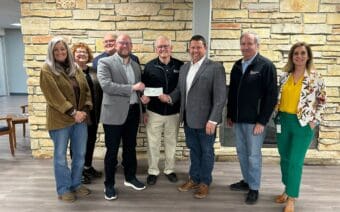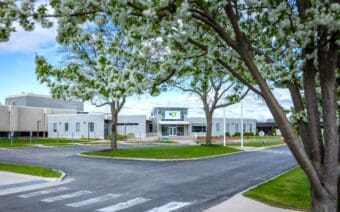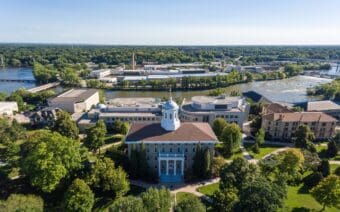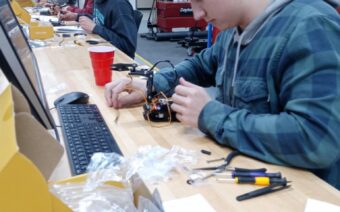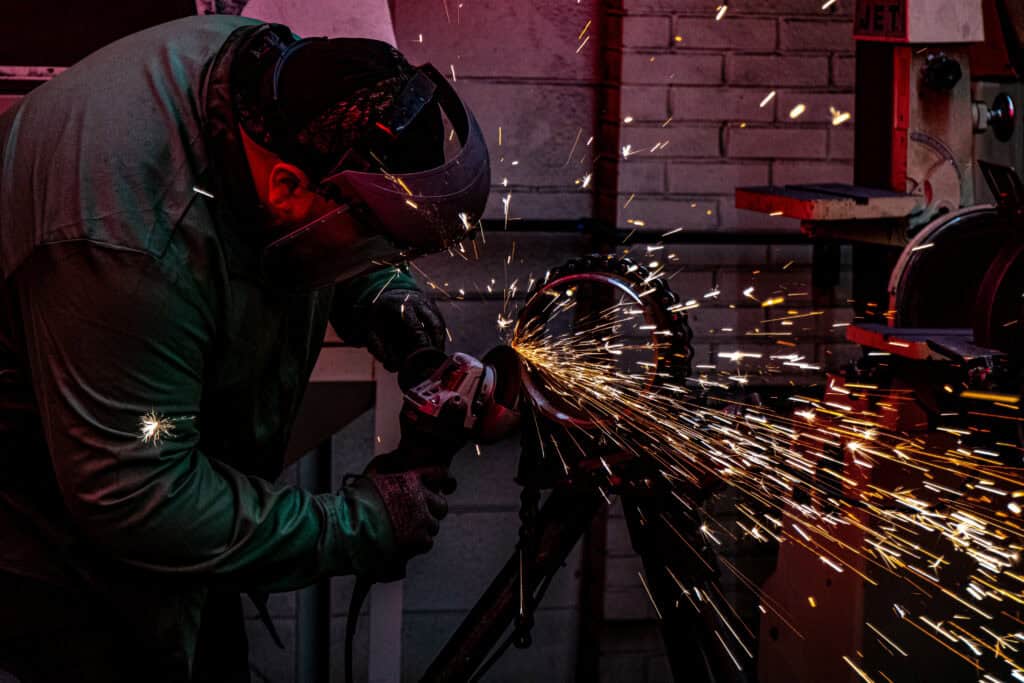
June 17, 2024
NORTHEAST WISCONSIN – Northeast Wisconsin Technical College (NWTC) recently received a grant of nearly $600,000 aimed at getting more people on board with a shipbuilding career.
A well-timed opportunity – Meridith Jaeger, vice president of college advancement at NWTC, said.
Many regional shipbuilders’ need for employees, Jaeger said, is growing due to additional work, combined with an aging workforce.
“It’s a compounding of boomers, growth in work and a general gap in the workforce, coupled with the fact of the 2,500 employees in the shipbuilding industry, one of five of them is 55 or older and will be aging out in the next 10 years,” she said. “With the significant contracts Fincantieri has gotten representing another $1 billion in work, the work is not stopping anytime soon.”
Northeast Wisconsin, Jaeger said, is home to six of the Great Lakes’ eight shipbuilders.
The work, she said, is largely due to the increase in contracts for U.S. Navy vessels.
Compared to the 296 vessels that exist today, Jaeger said the U.S. Navy’s 30-year plan proposes up to 404 manned and 204 large, unmanned vessels in the naval fleet.
Just last month, the Department of Defense announced Fincantieri Marinette Marine was awarded a contract valued at $1 billion to build two additional Constellation-class Frigates: FFG 66 and FFG 67.
Jaeger said Fincantieri received the contract for the lead ship of the Constellation-class in April 2020 and the Navy exercised five options for follow-up vessels.
“Our goal is to fill (the gap) of those leaving as well as add to the need for hundreds of employees in the welding trade over the next couple of years to ensure we meet the workforce need and deliver as the Navy is expecting of us,” she said. “It’s a regional effort, for sure, and the work we do within that is education and training.”

Jaeger said that’s why the grant is pivotal in increasing the influx of people interested in pursuing shipbuilding careers.
The $579,181 grant from the Department of Navy’s (DoN) Science, Technology, Engineering & Mathematics Education and Workforce Program, she said, is intended to attract and grow a new talent pool for the shipbuilding sector.
The funding provided over three years, Jaeger said, is intended to be seed funding for this effort and allow NWTC to simultaneously create a sustainability plan for its talent attraction.
Among the many forms this will take, she said, is Welding Rodeo: Experiences in STEM events.
Roundup at the rodeo
Jaeger said the Welding Rodeos, anticipated to begin by fall, will redefine the term “rodeo” – featuring hands-on welding opportunities, welding competitions, a STEM career fair and a metal sculpture contest, with proceeds funding scholarships.
The concept, she said, mirrors a welding rodeo Bellingham Technical College has hosted to showcase welding for years, which resonated with NWTC.
Jaeger said the college will host the Welding Rodeo within the communities of its Sturgeon Bay and Marinette campuses – home to Fincantieri Marine Group shipyards and many other influential maritime employers.
These local industry partners, she said, will be key collaborators in the rodeo, actively contributing to its mission and driving success.
“This first one will be a pilot, but our goal is to have at least four teams in each location – be it high school students led by their career and technical education instructor; a team of welders from Fincantieri or other employers in the region; or even a team of artists who do work with welding machines,” Jaeger said. “They will all follow the rules and guidelines for safety, structure size and stability.”
Jaeger said the team envisions each competing team will have a welding machine and access to a variety of scrap metal and be tasked with creating a sculpture that fits a design supplied by a local artist.
Each rodeo, she said, will have a theme and the sculpture will need to reflect that.
Items created will be judged, with awards provided followed by auctioning of the sculptures created to fund scholarships.
Jaeger said the plan is to offer a full experience with concession stands, displays from different industry partners to showcase career opportunities and provide hands-on activities, such as using a welding simulator machine.
In the process, she said, the community will see welding “in action.”
“It’s meant to bring the community together to build awareness of what welding is like,” she said. “The visibility of the welding to the general public is what is unique about this.”
Jaeger said that’s intended to prompt questions into welding career opportunities, including in the shipbuilding industry and the educational pathways to get there.
“Our goal is to increase the number of individuals entering our welding programs to be hired by shipyards as shipfitters, welders and pipefitters in Northeast Wisconsin,” she said.
More information on the rodeos, Jaeger said, will be shared as the events are further defined.
Intensive training
Individuals interested in pursuing a welding career, Jaeger said, have many options for learning.
Last year, NWTC graduated 90 students in the welding program between its Green Bay and Marinette campuses – as well as granting 40 welding certificates.

In addition, she said, NWTC has been an integral partner to the shipbuilding industry, training nearly 15,000 new hires and incumbent workers through its North Coast Marine Manufacturing Training Center in Marinette.
Jaeger said last year, that included training 1,400 people, with nearly 950 in the metal trades (pipefitting, shipfitting, outfitting) and most of those within the metal trades being Fincantieri employees.
The training, she said, is held in high esteem.
NWTC holds a 2024 Center of Excellence for Domestic Maritime Workforce Training and Education (CoE) designation from the U.S. Department of Transportation’s Maritime Administration.
Jaeger said the distinction denotes the college’s value in developing and preparing students for careers in the maritime industry.
NWTC is one of 32 maritime training locations across the United States and Guam to receive the 2024 CoE.
“That place is hopping, as we follow the shipyard schedule and train starting at 5 a.m.,” she said. “The center is literally across the street from the shipyard, so it’s convenient for the employees and instructors to go into the shipyard and have the foremen be part of their training.”
Jaeger said the college is also providing specialized training through NWTC’s campus for Fincantieri Bay Shipbuilding in Sturgeon Bay – providing 15,000 hours of training to more than 100 Bay Shipbuilding employees in the last year.
A shipyard’s perspective
John Krueger, chief of shipyard operations at Fincantieri Marinette Marine, said he has seen a lot during his 35-year tenure (and counting) in the shipbuilding industry.
In his current role, Krueger said he’s concerned about having enough employees to do the volume of shipbuilding work – especially with Fincantieri’s Naval contracts extending work to 2030 and beyond.
In the 1980s up to the 2000s era, he said many of his employees had the advantage of participating in shop classes in high school.
As those offerings lessened, so, too, he said, has the interest in the industry.
And, those who did have an interest in working in the shipyards, Krueger said, came to Fincantieri Marinette Marine without any baseline skill sets often honed in high school shop classes.
“People came in ‘green’ off the street, and it’s difficult to come in green and start working on a ship,” he said. “No two are the same, as each ship is unique, and it takes anywhere from two to four years to build a ship.”
Krueger said he sees the tide shifting now, with shop classes returning and other opportunities for students to learn about the trades through apprenticeships and events like NWTC’s planned Welding Rodeo.
That’s important, he said, as the need for shipyard employees is no secret.
Nationwide, Krueger said there are 15,000-20,000 shipyard vacancies – be it to build ships in Wisconsin or submarines in Newport News, Virginia.
The lack of welders, he said, is of particular concern given the role’s impact on a ship’s build.
“The largest part of building a ship is the structural build, and pipe welders are needed for that,” he said.
Shipbuilding careers, Krueger said, offer viable careers with good earning potential; advancement opportunities with additional certification and training (often at the near-site North Coast Marine Training Center) and the opportunity to be a part of something bigger than yourself.
“When you work on a ship, you’ll never forget you built it as it’s a proud day when it’s (finished) – knowing it’s going to do something for the defense of our country or sailors’ safety,” he said.
Welder perspective
Lucas Andreini said he has worked as a welder since 2017 but was drawn to work in shipbuilding.
Upon being hired at Fincantieri Marinette Marine, Andreini said his onboarding included participating in a five-week welding boot camp at North Coast Marine Manufacturing Training Center, learning welding specific to the industry in its onsite marine welding lab.

He said he appreciated the training in preparing him for working on ships, as well as easing his transition into the shipyard.
“It has sharpened a lot of my skills, and I’ve learned a lot of things I didn’t know before – like welding on ceramic tape backing,” he said. “I’m a meticulous person, and I know this will require me to be on my A game.”
Andreini said he feels well-prepared to get to work after completing the boot camp.
“It was a good experience to do the hands-on work, and I feel like they could hand me a print and I could go anywhere on the ship and start welding,” he said. “(The training) gets you comfortable.”
Further spreading the word about opportunities in the field, Andreini said, is a must.
“I’ve talked to several guys I worked with at my old job, and they didn’t realize what working as a welder in a shipyard had to offer,” he said. “People know there’s a shipyard here but don’t realize everything that is done here, including the Navy ships. If it were more known, it would be more appealing to more people.”
 ‘It’s never too late to follow your dreams’
‘It’s never too late to follow your dreams’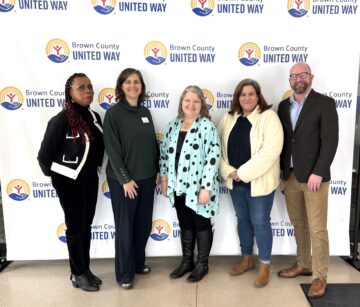 ARPA funds help nonprofits address childcare accessibility
ARPA funds help nonprofits address childcare accessibility

